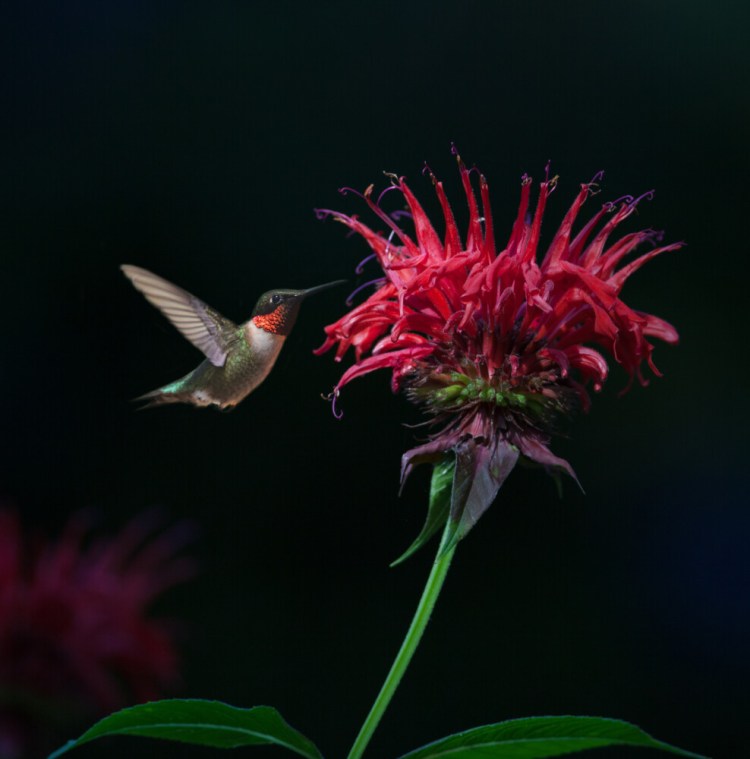The coming month is a good time to evaluate – and improve – your flower gardens.
I know you’re busy. The vegetable garden is producing a lot of food and needs weeding. Stuck at home all last year, everyone you know is coming to visit this year because – it goes without saying – Maine is the ideal place to be in the summer. Naturally, you wouldn’t want them seeing weeds in your garden. Or maybe you’re the one traveling – either escaping the tourists or heading to camp.
But if you are staying home in August, visitors or no, your ornamental gardens deserve some study. Observe closely: If your garden is too green, with no flowers to break up that soothing color, consider additions. Many gardens are dominated by spring-flowering plants. People head to garden centers for Mother’s Day or Memorial Day. Their eyes are attracted to the plants that are in bloom, so that is what they buy.
If you go to the nurseries now and maybe again in September, you will find entirely different plants to add to your landscape. You can plant them now if you are willing to carefully water them until the end of the season. It might make sense, though, to make a list of what you like and purchase the plants either next spring or during the end-of-the-season sales in September and October. If you elect to wait for sales, bear in mind that nurseries, perhaps due to all the new gardeners in Maine, are running low on some plants.
Also keep in mind that everything seems to be blossoming earlier than usual this year – although with climate change, who knows? This could be the new normal.

A daylily in columnist Tom Atwell’s garden in Cape Elizabeth. The flowers bloom for just a single day, but the plant itself has blooms for a stretch of time. Gregory Rec/Staff Photographer
Our daylilies (hemerocallis) began blooming in late June, and the larger, showier ones should continue through mid-August. They are a standard in our garden, and while each blossom lasts only a single day (as the name says), the plants produce blossoms over a long period. Some of our favorites are Barth Daylilies, hybridized by Dr. Joseph Barth in Alna. We discovered them in the 1970s. After Dr. Barth died, his family moved production to coastal Maine, and about a decade later, Jeff O’Donal of O’Donal’s Nursery in Gorham took over the line. That line is a personal favorite, but you can pick among many other large, showy types of daylilies.
An alternative – less stunning individually – are the ever-blooming landscape daylilies, the first to be developed was Stella D’Oro but many newer ones have “returns” in their name. These will supply colors through the end of the gardening season.
Another of our favorite late bloomers is actaea, which used to be called cimicifuga. Depending on the type, this native perennial grows up to seven feet tall; it has graceful long, thin white flowers on distinctive foliage that can be dark green to an almost-black purple.
Monarda, or bee balm and another native, produces red to purple blossoms beginning in early July that can last a month or more. Its height will depend on the variety you grow, but whichever, the blossoms are bright and beloved by pollinators. Rudbeckia, or black-eyed Susan, likewise a native, begins blossoming in July and continues almost to the end of the season.
Other late-blooming herbaceous perennials, like asters and coreopsis, aren’t yet in bloom, so we won’t discuss them here. Instead, let’s talk shrubs briefly. For years, I have complained about the unreliability of the Endless Summer series of hydrangeas, but this year they seem to finally be living up to their name. They are gorgeous. Plants that have not bloomed, or have bloomed only sparsely, for the last five years are now full of the big blue flowers that usually show up only on catalog covers. Though the success of these macrophylla varieties this year are not enough to convince me to buy more, I am delaying digging out the ones we have.
The other families of hydrangea, arborescens and paniculata, have done well year after year, which is why I still prefer them to the macs.
These are just the tip of the iceberg. The takeaway here is not so much particular plants but rather that now is a good time to inventory your garden and decide where you would like more. Then visit some plant nurseries to decide what that more should be.
Tom Atwell is a freelance writer gardening in Cape Elizabeth. He can be contacted at: tomatwell@me.com.
Send questions/comments to the editors.



Success. Please wait for the page to reload. If the page does not reload within 5 seconds, please refresh the page.
Enter your email and password to access comments.
Hi, to comment on stories you must . This profile is in addition to your subscription and website login.
Already have a commenting profile? .
Invalid username/password.
Please check your email to confirm and complete your registration.
Only subscribers are eligible to post comments. Please subscribe or login first for digital access. Here’s why.
Use the form below to reset your password. When you've submitted your account email, we will send an email with a reset code.